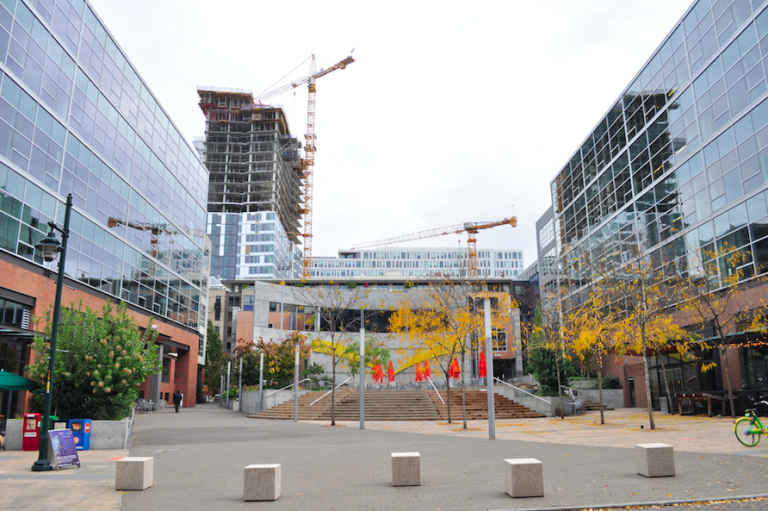Published on November 19, 2019

What kind of urban citizen is Amazon going to be?
High tech companies are traditionally a suburban phenomenon, and the burbs have been a gentler place for expansion than the heart of a city. The prototype, of course, is Silicon Valley, south of San Francisco, and Seattle’s Eastside. In such places tech companies could sprawl, and successful entrepreneurs could build bucolic, campus-like facilities to coddle staffers in a think-tank kind of environment.
Margaret O’Mara, a University of Washington history professor, Urban@UW Affiliate, and author of the new history The Code: Silicon Valley and the Remaking of America, observes that tech entrepreneurs also have a suburban mindset. Their rapidly growing suburban companies didn’t displace many people — it wasn’t necessary to raze working class neighborhoods when, in the case of the Valley, all you needed to do was bulldoze apricot orchards, O’Mara says.
Tech shifted during the dot-com era and the underlying move from hardware to software. Horizontal was no longer a big issue, so vertical was now an option: campuses were out, downtown high-rises in. Urban pushback began immediately as an influx of young, single, high-wage, childless workers arrived to the denser, settled confines of the city, their large wage differentials prompting an affordability crisis. Seattle and San Francisco, lifestyle cities adjacent to tech burbs, are poster children for the shift.
What does Amazon need to do? “They need to change the way they behave,” says O’Mara. They need to develop a mindset that is much more broadly civically engaged with the city itself. The big money Amazon pushed out in the election was a form of civic engagement, even if it didn’t have the effect they hoped. “At least it signaled new engagement,” she says.
Continue reading at Crosscut.
Originally written by Knute Berger for Crosscut.